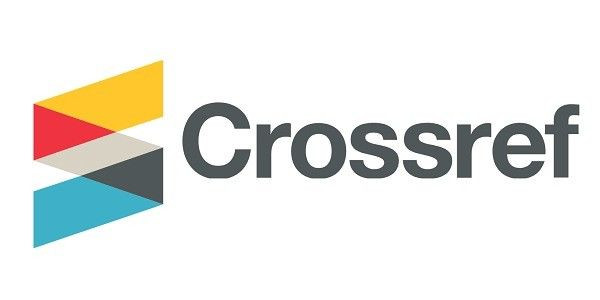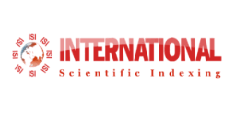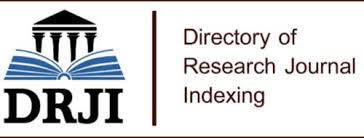Research Article
Investigating the Therapeutic Effects of Temozolomide Through Histone Methylation Analysis
- Dr. Tieli Wang
Corresponding author: Dr. Tieli Wang
Volume: 1
Issue: 8
Article Information
Article Type : Research Article
Citation : Martinez, P, Bernal, R, Hills, R, Wang, T, Investigating the Therapeutic Effects of Temozolomide Through Histone Methylation Analysis. Journal of Medical and Clinical Case Reports 1(8). https://doi.org/10.61615/JMCCR/2024/AUG027140820
Copyright: © 2024 Tieli Wang. This is an open-access article distributed under the terms of the Creative Commons Attribution License, which permits unrestricted use, distribution, and reproduction in any medium, provided the original author and source are credited.
DOI: https://doi.org/10.61615/JMCCR/2024/AUG027140820
Publication History
Received Date
02 Aug ,2024
Accepted Date
13 Aug ,2024
Published Date
20 Aug ,2024
Abstract
While extensive research has focused on the methylation of DNA by the anticancer drug temozolomide (TMZ), there remains a gap in our understanding of its potential to methylate proteins. In a previous study, we demonstrated that TMZ can methylate histone proteins in vitro using purified recombinant protein. Our current investigation aims to explore the therapeutic benefits of TMZ through protein methylation in breast cancer cells and understand how TMZ impacts protein levels via this mechanism. Specifically, we are interested in histone proteins due to their role in DNA binding and gene regulation. To assess methylation levels, we employed a biochemical method, treating cancer cells with varying concentrations of TMZ. Our results suggest that TMZ may indeed influence histone protein levels in cancer cells although further experiments are necessary to validate our observation. This research direction is intriguing because it could reveal a novel aspect of TMZ’s antitumor activity beyond its known interactions at the DNA level. By focusing on protein methylation, we expand our understanding of TMZ’s effects on cancer cells. This work could potentially uncover new insights into TMZ's efficacy and possibly identify new therapeutic targets or strategies for cancer treatment.
Graphic Abstract

Keywords: Temozolomide, Histone methylation, Therapeutic benefit, Immunoassays, Breast Cancer, Epigenetic gene regulation.
►Investigating the Therapeutic Effects of Temozolomide Through Histone Methylation Analysis
Martinez, P1, Bernal, R2, Hills, R2, Wang, T1*
1Department of Chemistry and Biochemistry
2Department of Clinical Science, California State University Dominguez Hills, Carson, CA 90747
Introduction
Temozolomide (TMZ) is a prodrug that is classified as one of the oldest alkylating compounds still in use for cancer treatment. It remains active in treating several types of cancers. [1,2,3]. Like other alkylating agents, TMZ works by spontaneously producing a methylating agent metabolite under physiological conditions through a chemical conversion process:
- TMZ undergoes rapid chemical conversion in the bloodstream at physiological pH.
- It produces a metabolite called 5-(3-methyltriazen 1-yl) imidazole-4-carboxamide (MTIC).
- MTIC further degrades into two components:
- 4-amino-5-immidazole-carboxamide (AIC): An inactive metabolite
- Methyldizaonium cation: The active methylating agent
Figure 2. Metabolic Cascade of Temozolomide (TMZ) at Physiological pH

Figure: 2 Illustrates this chemical conversion process of TMZ.
Proteins being the executors of cellular activity, play diverse and crucial roles in living organisms, surpassing the significance of genes in terms of numbers and functionality. Protein methylation is a type of post-translational modification that involves chemical modifications of amino acid side chains of Lys and Arg. Histones are now recognized as dynamic proteins. They undergo multiple types of post-translational modifications. [4] The importance of histone methylation is that it is crucial for determining active and inactive regions of the genome [Figure 2].[5] Thus, it plays a significant role in cancer and other disease studies. TMZ has been showed to be able to deliver a methyl group to the purine base of DNA. The antitumor effect of TMZ through DNA methylation is well-studied. This DNA methylation damages DNA and causes cancer cell death. However, the antitumor activity of TMZ on protein is not well understood. We hypothesize that the therapeutic benefits of temozolomide also extend to protein levels, specifically histone and its associated proteins.

Histones provide structural support for chromosomes. Each chromosome contains a long molecule of DNA that must be wrapped around histones to fit into a small space in the nucleus of cells, giving the chromosome a compact shape. Therefore, any change in histone structure can impact gene expression and genomic stability [6,7]. In our previous study, we demonstrated that TMZ is able to methylate histone3 protein in vitro using recombinant histone protein. [8] Investigating the impact of temozolomide on histone methylation levels could provide valuable insights into its potential therapeutic benefits at the protein levels. Our focus in this report is to examine the post-translational modification effects of temozolomide (TMZ) on histone protein in breast cancer cells.
Methods
Culturing Cancer Cells
The DMEM 1X cell medium (Gibco, NY, USA) and Cosmic Calf Serum (Hyclone, Utah, USA) used for MDA-MB-231breast cancer cell culturing were purchased from the ATCC and Fisher Scientific company. Temozolomide (>98%) and Dimethyl sulfoxide (>99.5%) were purchased from Sigma-Aldrich Co. (St. Louis, MO). Cells were seeded in a 75cm flask. The cell culture set-up in the fume hood is shown in Figure 3. Breast cancer MDA-MB-231 cells were incubated at 37oC supplied with 95% CO2. The breast cancer cells were collected via centrifugation at 70-80% confluency. The cell pellets were then frozen at - 80oC for later assays.
Figure 3. Cell Culture Set-Up in Fume Hood (Medium.com)

Preparation of the Anticancer Drug TMZ for the Immunoassays
A Stock solution of 0.2mM TMZ was later made using DMSO. Using the TMZ stock solution, DMEM 1X/10% CCS media was drug-treated with 200 μM of TMZ/DMSO solution and was serially diluted to produce 50 μM and 100 μM TMZ concentrations. These drug-treated media solutions were then introduced to MDA-MB231 breast cancer cells growing in 75cm2 cell culture flasks. Following TMZ drug treatment, at 70 – 80% confluency, the cells were pelleted and frozen at - 80oC. The study included the following treatment groups:
- Control group: Breast cancer cells treated with diluents (no temozolomide)
- Temozolomide groups: Cells treated with 50μM, 100 μM, and 300μM of temozolomide
The histone methylation was assessed at nonmethylated, mono, di, and tri-methylated levels. The TMZ and DMSO were added every two days. The drug-treated media was added to the culture flask as shown in figure 4. Every study was performed three or four times.
Figure 4. Drug-Treated Media Added to the Canted Culture Flask (Thermo scientific)

Protein Concentration Assays
The cells were lysed using reagent-based methods. A lysing buffer was used to achieve protein extraction by breaking down the cells. Detergents in the buffer interrupt the lipid barrier surrounding cells by solubilizing proteins and disrupting lipid-lipid, protein-protein, and protein-lipid interactions. RIPA buffer containing protease inhibitors was used to extract protein from the pelleted cells.
The bicinchoninic acid (BCA) protein assay method was employed to determine the total protein concentration. The working solution was prepared by mixing Reagent A and reagent B in a 50:1 ratio. 100μl working solution was added to each well followed by 10ul standard or sample in a 96-well plate. The standard samples were prepared at concentrations of is 0 μg/μl, 2 μg/μL, 4 μg/μL, 8μg/μL, 12μg/μL, 16 μg/μL and 20 μg/μL. Both standards and samples were run in duplicate. The plate was incubated at 37oC for 1 hour, during which a violet color developed as shown in Figure 5. Absorbance was measured at 562nm after the incubation using a BioTek ELx 808 plate reader. The standard curve was obtained by plotting concentration (x-axis)) against absorbance (y-axis). The concentration of the samples was then calculated using the linear regression equation derived from this standard curve.

Immunoblot
Standard protein electrophoresis conditions and reagents were used for gel and sample preparation. Recombinant proteins (20μg) and protein extract from the breast cancer cells were loaded onto a 12% Mini-Protean-TGX precast gel (Bio-Rad Laboratories, Inc., Hercules, CA). Electrophoresis was carried out in 1X Tris/Glycine/SDS gel electrophoresis buffer (Bio-Rad, Hercules, CA) for 1 h at 100 V according to the procedure recommended by the manufacturer.

Proteins were then transferred to a PVDF membrane pre-wet with methanol and transfer buffer (1X Tris/Glycine). The membrane was blotted with blocking buffer (TBS) for 1 hour as shown in step 4, followed by incubation with anti-β-actin (mouse) monoclonal primary antibody (Sigma-Aldrich Co., St. Louis, MO) and anti-histone H3K4me1 (rabbit) polyclonal primary antibody (Active Motif, Carlsbad, CA) solutions that were diluted 1:1000 in blocking buffer with 0.2% tween-20 for 3 hours shown in step 5.

Following standard washing procedure, the membranes were then blotted with Goat anti-Rabbit IgG (H+L) and Goat anti-Mouse IgG (H+L) secondary antibodies diluted 1:2,000 in blocking buffer with 0.2% tween-20 for 1 hour in the dark shown in step 6. The membrane was washed three times with TBS with 0.1% tween-20 and imaged by a LI-COR camera (LI-COR Fx Biosciences, Inc., Lincoln, NE) as shown in step 7. This Western blot procedure is well-designed to detect and compare histone methylation levels across different TMZ concentrations. The use of specific antibodies for histone and methylated histone will allow you to observe any changes in methylation status induced by the drug treatment.

Results
Protein Concentration Determination
The Bicinchoninic Acid (BCA) Protein Assay is a widely used colorimetric method for detecting and quantifying total protein concentration. In this assay, peptide bonds and specific amino acids (such as cysteine, tryptophan, and tyrosine) reduce cupric ions (Cu2+) to cuprous ions (Cu+) under alkaline conditions. The resulting BCA-Cu+ complex forms a purple color, which is measured at 562 nm [Figure 6]. This purple-colored product results from the chelation of two BCA molecules with one cuprous ion. The color intensity directly correlates with protein concentration, and the assay has a detection range of 0.2–50 μg/mL.
Figure 6. Principle of Bicinchoninic Acid (BCA) Assay

Figure 7. Linear regression analysis of standard samples

Compared to the Bradford assay, the BCA method exhibits less protein variability and can be performed in small volumes using 96-well plates. The standard curve equation, Y = 0.0156x + 0.0851, relates the concentration of the standard (x) to its absorbance (y), as shown in table 1 and figure 8. Table 2 displays the average sample concentration calculated using this equation, along with the corresponding plot shown in figure 8.
Table 1. Absorbance measurement of standard solution

Figure 8. Total protein concentration across different range of TMZ treatment

Table 2. Total protein concentration of breast cancer cells following the TMZ treatment

Immunoassays
Western blotting (also known as immunoblotting) is a widely adopted method for detecting proteins as well as posttranslational modifications on proteins. It relies on antibody-based probes to provide specific information about target proteins within complex biological samples. This technique can yield semi-quantitative or quantitative data about the target protein whether in simple or complex biological contexts.
The image in figure 9 shows the results of an experiment examining histone methylation levels across different concentrations of TMZ (temozolomide, a chemotherapy drug). The Western blot images above each graph provide a visual representation of the protein levels, which correspond to the quantified data in the bar graphs below.
The experiment looks at three different histone modifications: H3K4me1, H3K4me2, and H3K4me3 while H3 protein serves as the control. Each panel (B-D) represents a different histone modification, with panel A representing non-methylated histone.
Figure 9. Mono-, di-, and tri- histone methylation levels across different TMZ concentrations. A. H3 protein (non-methylated histone) B. H3K4me1 (monomethylation) C. H3K4me2 (dimethylation)

For each modification, the experiment tested five conditions: DMSO (control) and four concentrations of TMZ (0μM, 50μM, 100μM, and 200μM). We observed a slight variation in non-methylated and methylated histone levels as the TMZ concentration increased. However, this variation may be attributed to the sample loading fluctuations. Consequently, the results prompted us to acquire a newer model of the Li-COR imager to mitigate potential disparities and other factors that could contribute to this uncertainty.
Regarding the western blot analysis of histone methylation levels in breast cancer cells, the results were inconclusive. However, they do suggest that TMZ may influence histone methylation levels. Specifically, the mono- and di-methylated bands exhibit stronger signal intensity when compared to non-methylated histone bands in imaging software as shown in Figure 9. We noted a reduction in histone methylation at the N-terminal lysine 4 residue with increasing TMZ concentrations in brain tumor cells. However, this trend was not obvious in breast cancer cells, indicating cell-type-specific effects. Overall, the data suggest that TMZ concentration can affect histone methylation levels, but the effects vary depending on the specific modification.
Discussion
Western blots are commonly used in conjunction with other techniques to enhance proteomic studies [9,10]. For example, when analyzing protein–protein interactions, target protein complexes can be isolated by immunoprecipitation or chromatography followed by western blotting to investigate potential binding components. Additionally, western blotting serves as a valuable tool for verifying proteins of interest in exploratory proteomic methods like two-dimensional gel electrophoresis.
This study aims to explore how TMZ, which is typically associated with DNA methylation effects, might also influence histone methylation. Our western blot analysis specifically examined mono-methylated, di-methylated, and tri-methylated histone levels following temozolomide treatment. Here are key aspects of this study:
- Specificity: Our focus was on a particular histone modification (H3K4me, H3K4me2 and H3K4me3)
- Potential implications: We aimed to understand how TMZ might influence gene expression through histone modifications, beyond its known DNA methylation effects.
Although we could not draw concrete conclusion about the dose-response relationship by examining histone methylation at varying TMZ dosages, the results did indicate the possibility of histone methylation by TMZ in breast cancer cells. Specifically, we observed overall methylation levels in mono- and di- methylation of histone compared to the non-methylated histone. This research could provide valuable insights into TMZ's broader effects on epigenetic regulation in cancer cells, potentially revealing new aspects of its anticancer mechanism. [11,12] The direction of this research is intriguing because it explores a potentially novel aspect of TMZ's antitumor activity. By focusing on protein methylation, we expand our understanding of TMZ's effects beyond its known DNA-level interactions. Some questions that further research might address include:
- Does TMZ cause methylation of specific proteins?
- How does protein methylation by TMZ affect protein levels or function?
- Could protein methylation contribute to TMZ's therapeutic effects?
- Are there any previously unrecognized mechanisms of action for TMZ related to protein modification?
Despite the initial success in the method, we have decided to repeat the western blot analysis using a Li-COR Odyssey cLx or Odyssey M imaging machine. Obtaining reliable results is crucial for further investigation. The underlying principle of this application revolves around the utilization of near-infrared (NIR) fluorescence by the multi-channels within LI-COR Odyssey image system. These channels can simultaneously detect distinct western protein targets, such as one control protein and one target protein on the same gel. This approach is particularly beneficial for this research, as it facilitates the generation of conclusive results regarding histone methylation. By comparing levels of histone and methylated histone on the same gel, it eliminates the disparities arising from sample loading variations, different gel matrices, and detection levels. Consequently, this new imaging system makes it highly advantageous for identifying changes in protein levels.
Conclusion
The study highlights an exciting aspect of temozolomide (TMZ)’s anticancer mechanism of action. The findings suggest that TMZ may impact histone methylation in MDA-MB-231 breast cancer cells. Levels of histone methylation and non-methylation showed slight variations with different dosages of TMZ treatment in these cells. Further studies are necessary to validate these results. By focusing on histone methylation, which is associated with epigenetic regulation of gene transcription, we're exploring a potentially significant mechanism by which TMZ could affect gene expression, apoptosis, and proliferation in cancer cells. This research has the potential to reveal new insights into TMZ’s effectiveness and identify novel therapeutic targets or strategies for cancer treatment.
Conflict of Interests
The authors declare that there is no conflict of interest.
Acknowledgements
The authors would like to thank LSAMP program and CSUDH for the funding support. The author appreciates the assistance and discussions from AI during the document editing process.
- Avendaño, C. Menéndez, J.C. (2015). Medicinal Chemistry of Anticancer Drugs; Elsevier: Amsterdam, The Netherlands. 243-271.
- Zhang J, Stevens, M.F.G. and Bradshaw, T.D. (2012). Temozolomide: Mechanisms of Action, Repair and Resistance. Current Molecular Pharmacology. 5(1): 102-114.
- Lopes IC OS, Oliveira-Brett AM. (2013). In situ electrochemical evaluation of anticancer drug temozolomide and its metabolites-DNA interaction. Anal Bioanal Chem. 405(11): 3783-3790.
- Strahl, B.D. and Allis, C.D. (2000). The language of covalent histone modifications. Nature. 403(6765): 41-45.
- De Marco, K. (2023). Histone and DNA Methylation as Epigenetic Regulators of DNA Damage Repair in Gastric Cancer and Emerging Therapeutic Opportunities. Cancers. 15(20): 4976.
- Klose, RJ and Rose NR. (2014). Understanding the relationship between DNA methylation and histone lysine methylation Biochim Biophys Acta Gene Regul Mech. 1839(12):1362-1372.
- Strobel, H, Baisch T, Fitzel, R, Schilberg, K, Siegelin, M.D, Karpel-Massier, G, Debatin, KM, and Westhoff, MA. (2019). Temozolomide and Other Alkylating Agents in Glioblastoma Therapy. Biomedicines. 7(3): 69.
- Wang, T, Pickard, A. and Gallo, J. (2016). Histone methylation by temozolomide; a classic DNA methylating anticancer drug. Anticancer Research. 36(7): 3289-3299.
- Wang, T. (2017). Proteomics for post-translational modification studies of histone and its implication in brain cancer therapeutic development. European Cancer Summit, Innovinc International publisher. 13.
- Leutert, M, Entwisle, S.W, Villen, J. (2021). Decoding Post-Translational Modification Crosstalk with Proteomics. Mol. Cell Proteom. 20: 100129.
- Lee, R. (2023). Emerging Role of Epigenetic Modifiers in Breast Cancer Pathogenesis and Therapeutic Response. Cancers. 15(15): 4005.
- Barciszewska, A.-M, Gurda, D, Głodowicz, P, Nowak, S, Naskr˛et-Barciszewska, M.Z. (2015). A New Epigenetic Mechanism of Temozolomide Action in Glioma Cells. PLoS ONE. 10(8): 0136669.
Download Provisional PDF Here
PDF




p (1).png)




.png)




.png)
